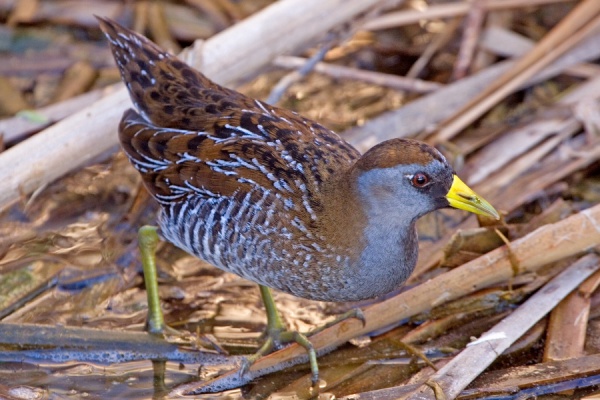Facts About Sora (bird)
The sora, a small waterbird from the Rallidae family, is often referred to as the sora rail or sora crake. Its genus name, *Porzana*, derives from Venetian terms for small rails, and "Carolina" in its name honors the Carolina Colony. The term "sora" likely originates from a Native American language. Adult soras measure approximately 19–30 cm in length, featuring dark-marked brown upperparts, a blue-grey face and underparts, and black and white barring on their flanks. They possess a short, thick yellow bill and weigh between 49 and 112 grams.
Soras breed in marshes throughout North America, selecting well-concealed locations within dense vegetation for their nests. They favor areas abundant with cattails, sedges, bulrushes, and similar plants. During migration or after the breeding season, soras can also be found in cultivated regions. These birds are omnivores, consuming seeds, insects, and snails. They are known for their distinctive call, which sounds like a slow, whistled "ker-whee" or a descending whinny.
Soras are widespread across North America, breeding from Nova Scotia to California and Arizona. In the winter, they migrate to the Caribbean, South America, Central America, and Mexico, with migration typically occurring in the spring. Soras face threats from predators such as American minks, skunks, coyotes, and various bird species.
Their diet includes snails, crustaceans, insects, and plant seeds. Factors such as habitat availability, temperature, and predation impact their survival rates. Although soras are relatively common, they face challenges due to habitat loss. Interestingly, they tend to investigate call broadcasts, making them easier to spot in the wild.

 Ireland
Ireland